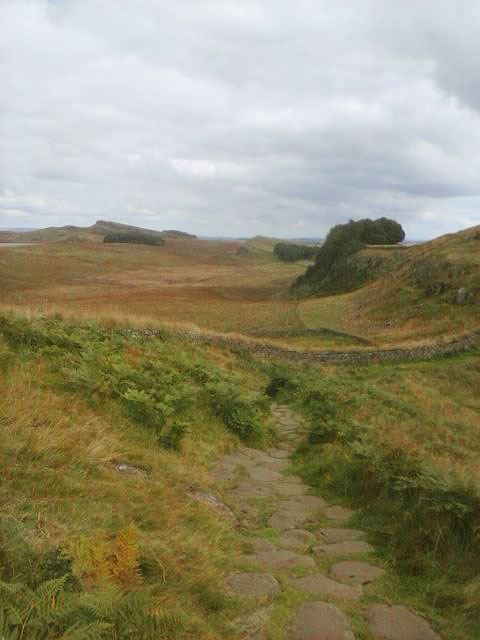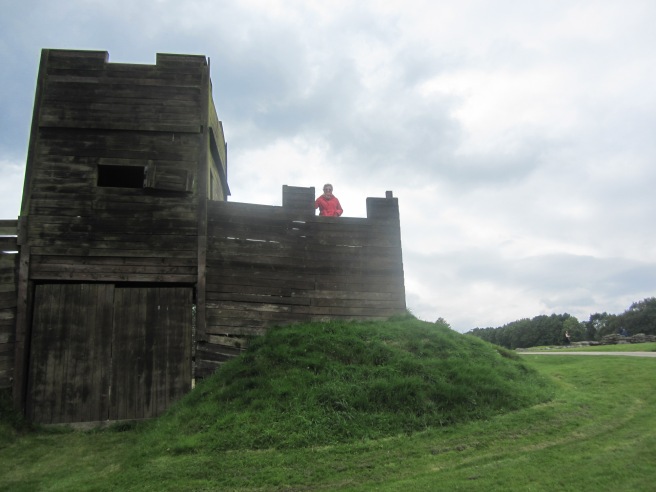
I didn’t know how to start talking about the wall-side of my Northumberland trip, but linnet has given me a clue: “my first impressions of seeing the wall”. Therefore here it is, “the wall and I”.
I’ve always longed to visit the wall. When I was less informed about it I thought that it was placed already in Scotland, not in England (yes, yes, I know… ignorance is something really annoying). Blame it on the movies and tv, I guess. By the way, once the wall is in the “seen dream destinations” list, Scotland, and specially the Highlands, heads now the top-three list “things to see before I die”. Being the other two Australia and the Polynesian Islands (to feel a little bit like Capt. Cook) chances are that Scotland will pass to the “done” column sooner than the other two. The problem is that there are still so many things I want to see near the wall…
As I wrote in the previous post about this trip, I already knew what I expected to see. The current remains of the wall are definitely less impressive of what it once was; this gif I have done mixing my above pic with an still of the film “The Eagle” illustrates the difference.
Although the fort of Vindolanda was not placed besides the wall as Housesteads (Vercovicium), but a few miles away, archeologists have rebuilt two fragments of how the wall looked like, one in stone and the other in timber; the wall in the east and west was built mostly with wood, as the appropriate stone was more difficult to find.


Considering that the wall crossed Britain from Newcastle to Carlisle, even if part of it was made with timber, we are talking of a lot of “lost stones”. They have been used in the centuries to build castles and churches and, should not be for the work and devotion of devoted archeologists most of the wall should be lost now. In the museums of the forts I have visited there is a special section dedicated to this people, the Wall Faces.
During the crisis of the coal mines which left many of the inhabitants of Haltwhistle unemployed, a businessman proposed to create a company (the Roman Stone Ltd) that would quarry what remained of the wall, but fortunately such an action was stopped by the petition of antiquarians, academics and public figures such as Rudyard Kipling. Other Roman archeological treasures have not been so lucky, as the Meta Sudans here in Rome. Their remains stood until almost mid thirties, when they were demolished by order of Mussolini.

Should someone be interested to learn more about the wall I suggest you to read “The Wall – Rome’s Greatest Frontier” by Alistair Moffat edited by Birlinn books. I bought it in Vindolanda’s Museum; I realised on arriving to Rome that there was a mistake in the binding of the book and that the first block of pages was repeated and some missing. I wrote the publisher and this week I have receive a very kind e-mail informing me that they will send me a brand new book, a hardback edition (I bought the paperback). Another example of Northern-Scottish (Birlinn Books is in Edinburgh) kindness; I just asked them a pdf file with the missing pages, not the whole book!
As usual, I am rambling without writing what I wanted: my impressions of the wall. Even if I wanted to visit the wall badly, I travelled not as prepared as I thought. The first night in the B&B, while sipping my mug of Earl Grey (by the way… I saw in Newcastle the monument to the Earl Grey in person) and reading the tourist depliants we had in our room, I realised that if I visited only Vindolanda and the Roman Army Museum in Carvoran I would miss the classical-iconical wall image, the view from Housesteads crags (first picture of this post). Therefore we devoted the second whole day we had at disposal in the north to Housesteads.

The site forms part of the English Heritage. As we are members of the Fondo Ambiente Italiano we can visit English Heritage sites for free; needless to say that I felt moved and proud. While arriving to destination with the bus (number AD122, the year Hadrian begun the construction of the wall) I felt already thrilled when recognising the shape of the hills, or the famous Sycamore Gap.

When climbing the hill leading to Housesteads I felt really happy, and I longed so badly to arrive to the top and see the landscape that I was about to run.

I entered through the south gate, pretended to pay attention to the remains of the commanders’ house on the left and hurried to the top, because I was anxious to arrive to the northern gate, where you can see this.

I finally had it in front of me: the immensity of the North, the wild land of Brigantes and Picts and, on my right, the second most iconic image of the wall, the Knag Burn gateway.

More pictures, comments and impressions in another post. Stay tuned!

